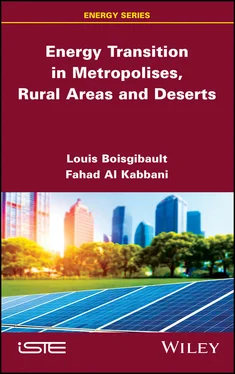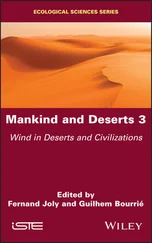1 Cover
2 Foreword Foreword “Think global, act local” for an ecological transition in the service of man and therefore of the planet, such was the major challenge of the 20th Century which, to paraphrase André Malraux, French novelist and Minister of Cultural Affairs, was “to be of ecology or not to be”. The global dimension is widely recognized in practice. After the warning issued by the Club of Rome in 1960, the Stockholm Conference in 1972 inaugurated the various earth summits, which have been held every 10 years since then (Nairobi in 1982, Rio in 1992, Johannesburg in 2002, Rio in 2012). Since 1995, the “Conferences of the Parties” have brought together diplomats and experts on climate change every year. Thus, COP21 in Paris in 2015 reached an agreement to fight global warming. The many international meetings over more than half a century have enabled experts from all over the world to reflect and propose further growth that is more respectful of the environment and the dignity of human beings, but also, through a wealth of literature, for academics from all continents to exchange, discuss and debate on sustainable development. On the other hand, the local dimension is less studied. More than ideas, it is the actions that must be observed, analyzed and evaluated. From this point of view, the book written by my two former PhD students is very timely. The approach, far from being dogmatic, is first and foremost practical and empirical. This work is the result of many months of investigation by the authors on the different fields they studied. However, the choice of these territories allows them to have a fairly universal view of the issue: developed countries (France), developing countries (Senegal and Morocco), emerging countries (Saudi Arabia), metropolises (Lille and Riyadh) and rural areas (Pays de Fayence), temperate zones and deserts. All the cases encountered at the local level were perceived by the two authors who complement each other admirably in their research. Moreover, the cultural dimension has not been forgotten, even if it is reduced to well-chosen examples. It is with great satisfaction that I write this foreword, as, having been a thesis supervisor, it is comforting to see that two of my most brilliant students have joined forces to tackle this vast subject essential for the future of the world, the ecological transition. I hope that this book will meet with the success it deserves, because it provides an innovative and precise insight into “local action”, without which the ecological transition cannot be achieved. Jean GIRARDON Professor Emeritus Sorbonne Université
3 Preface
4 Acknowledgments
5 List of Acronyms
6 1 Three Types of Space for Analyzing Energy Transition1.1. From energy-to-energy transition 1.2. Presentation of the six research areas 1.3. The importance of climates in the energy transition 1.4. Energy sectors analyzed by field
7 2 Energy Transition in Metropolises2.1. Energy characteristics in metropolises 2.2. The example of Riyadh in Saudi Arabia 2.3. The example of the European Metropolis of Lille in France 2.4. Lessons learned from the energy transition in metropolises
8 3 The Energy Transition in Rural Areas3.1. The characteristics of energy in rural areas 3.2. The example of Pays de Fayence in France 3.3. The example of Bokhol in Senegal 3.4. Lessons learned from the energy transition in rural areas
9 4 The Energy Transition in the Desert4.1. The characteristics of energy in the desert 4.2. The example of Ouarzazate in Morocco 4.3. The example of Neom in Saudi Arabia 4.4. Lessons learned from the energy transition in the desert
10 Conclusion: Widespread Digitalization of Society: A (in)Complete Process?C.1. Solutions for metropolises C.2. Solutions for rurality C.3. Solutions for the desert
11 References
12 Index
13 End User License Agreement
1 Chapter 1 Table 1.1. Properties of renewable energies Table 1.2. Geographical coordinates of the six study sites, from north to south Table 1.3. Climate in the selected areas according to the Köppen classification
2 Chapter 2 Table 2.1. Population trends in the Riyadh metropolisTable 2.2. Statistics from Saudi ArabiaTable 2.3. Recommended temperatures in the habitat in RiyadhTable 2.4. Population of Lille (source: INSEE)Table 2.5. Budget of the European Metropolis of Lille 2017 (in millions of euros...Table 2.6. Municipalities belonging to the Radinghem unionTable 2.7. Comparison of the two metropolises studied
3 Chapter 3Table 3.1. Events of the construction of the Callian photovoltaic power plantTable 3.2. African rivers over 1,000 km longTable 3.3. Steps in the construction of the Bokhol photovoltaic power plant and ...Table 3.4. Characteristics of the Bokhol photovoltaic power plantTable 3.5. Comparison of the two rural territories studied
4 Chapter 4Table 4.1. Comparisons NOOR I, NOOR II, NOOR III and NOOR IVTable 4.2. Renewable energies in Morocco, end 2015Table 4.3. Estimated installed capacity in renewable energies in Saudi ArabiaTable 4.4. Comparison of the two deserts studied
5 ConclusionTable C.1. Summary of issues for metropolisesTable C.2. Solutions for buildings in metropolisesTable C.3. Solutions for transport in metropolisesTable C.4. Solutions for services and industries in metropolisesTable C.5. Solutions for networks in metropolises Table C.6. Synthesis of the challenges for ruralityTable C.7. Synthesis of solutions for rural buildingsTable C.8. Synthesis of solutions for rural transportTable C.9. Synthesis of solutions for rural services and industriesTable C.10. Synthesis of solutions for rural networks Table C.11. Synthesis of the challenges for the desertTable C.12. Summary of solutions for the desert
1 Chapter 1 Figure 1.1. Maps of research fields
2 Chapter 2 Figure 2.1. Map of Saudi Arabia Figure 2.2. Riyadh Development Plan. For a color version of this figure, see www... Figure 2.3. Photo of the old city of Riyadh (source: Riyadh Development Authorit... Figure 2.4. Photo of Riyadh, the modern city with the parallel urban roads of Ki... Figure 2.5. Photo of a preserved historical monument (source: Riyadh Development... Figure 2.6. Photo of a garden, lake and water jets in Riyadh (source: Riyadh Dev... Figure 2.7. Photo of greenery developments in Riyadh (source: Riyadh Development...Figure 2.8. Photo of the Turki ben Abdallah Mosque in Riyadh (source: Riyadh Dev...Figure 2.9. Aerial photo of the diplomatic district of Riyadh (source: Riyadh De...Figure 2.10. Constructions in Aldariah (source: Riyadh Development Authority)Figure 2.11. Photo of urban road in Riyadh (source: Riyadh Development Authority...Figure 2.12. Photo of Prince Sattam Hub in Riyadh (source: Riyadh Development Au...Figure 2.13. The five power plants in Riyadh (source: Riyadh Development Authori...Figure 2.14. Photo of a thermal power plant in Riyadh (source: Riyadh Developmen...Figure 2.15. Photo of pylons for electricity transmission in Riyadh (source: Riy...Figure 2.16. Location of the European Metropolis of LilleFigure 2.17. Map of the European Metropolis of Lille showing the 90 municipaliti...Figure 2.18. Photo of the Chambre of Commerce & industry, Grand Lille, with its ...Figure 2.19. Photo of historic houses in the city center of LilleFigure 2.20. Photo of the former Tossée wool combing factory in Tourcoing, which...Figure 2.21. Photo of Tournai, Belgian city of the Eurometropolis Lille-Kortrijk...Figure 2.22. Photo of Roubaix Town Hall. Built in 1911 on the Grand-Place, Rouba...Figure 2.23. Electricity transmission network and transformers in the European M...Figure 2.24. Organization of gas and electricity distribution before the creatio...Figure 2.25. Map of the Lille–Mons-en-Baroeul heating network (source: map of th...Figure 2.26. Map of the Roubaix heating network (source: map of the European Met...Figure 2.27. Map of the Wattignies heating network (source: map of the European ...Figure 2.28. Map of the Wattrelos heating network (source: map of the European M...
Читать дальше












